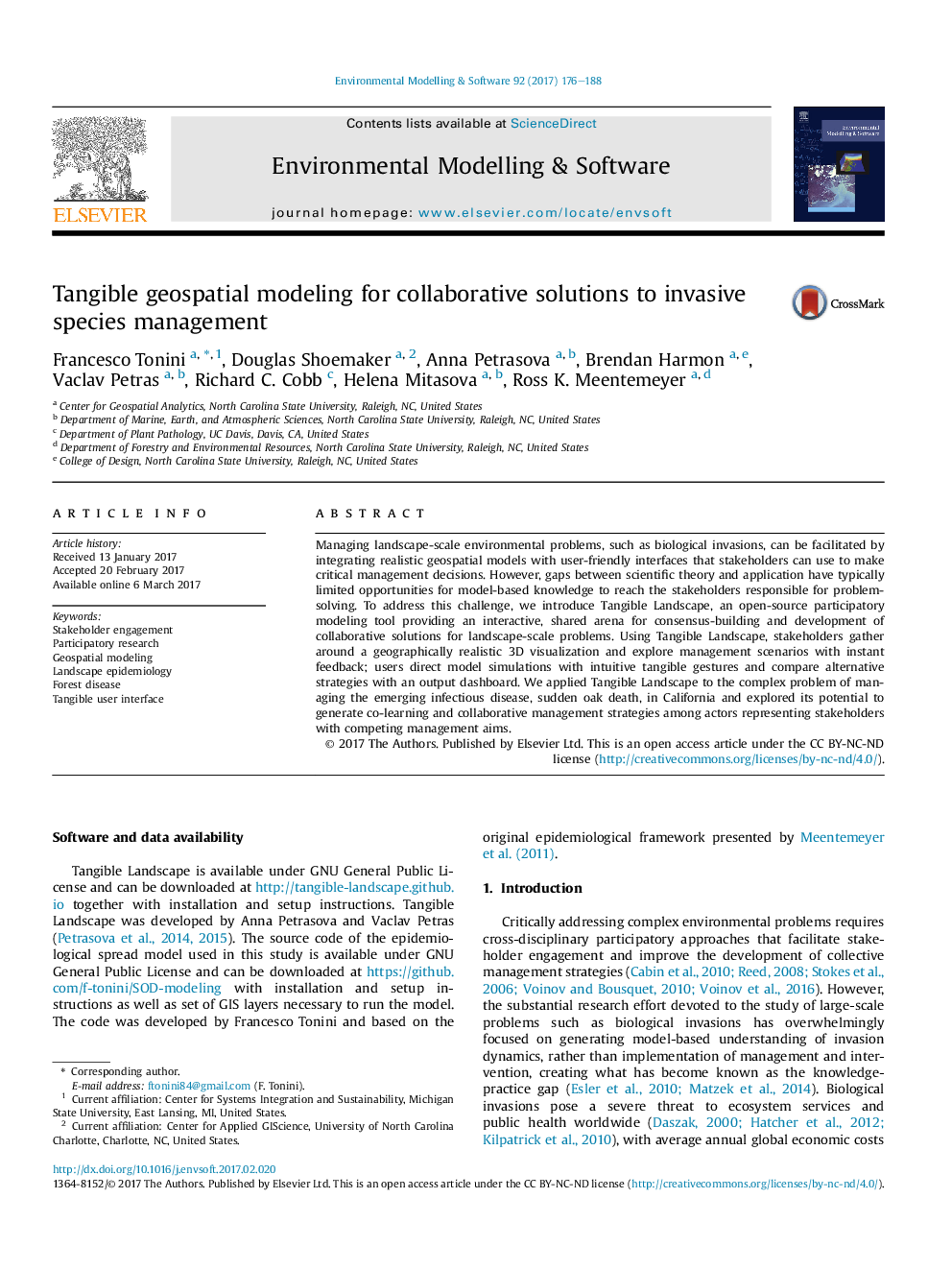| Article ID | Journal | Published Year | Pages | File Type |
|---|---|---|---|---|
| 4978148 | Environmental Modelling & Software | 2017 | 13 Pages |
â¢Participatory modeling frameworks are needed to bridge research and management.â¢With Tangible Landscape, users guided complex models using tangible gestures.â¢Near real-time 3D visualizations and feedbacks supported collective decision making.â¢Informed individuals engaged in trade-offs that facilitated solution building.
Managing landscape-scale environmental problems, such as biological invasions, can be facilitated by integrating realistic geospatial models with user-friendly interfaces that stakeholders can use to make critical management decisions. However, gaps between scientific theory and application have typically limited opportunities for model-based knowledge to reach the stakeholders responsible for problem-solving. To address this challenge, we introduce Tangible Landscape, an open-source participatory modeling tool providing an interactive, shared arena for consensus-building and development of collaborative solutions for landscape-scale problems. Using Tangible Landscape, stakeholders gather around a geographically realistic 3D visualization and explore management scenarios with instant feedback; users direct model simulations with intuitive tangible gestures and compare alternative strategies with an output dashboard. We applied Tangible Landscape to the complex problem of managing the emerging infectious disease, sudden oak death, in California and explored its potential to generate co-learning and collaborative management strategies among actors representing stakeholders with competing management aims.
